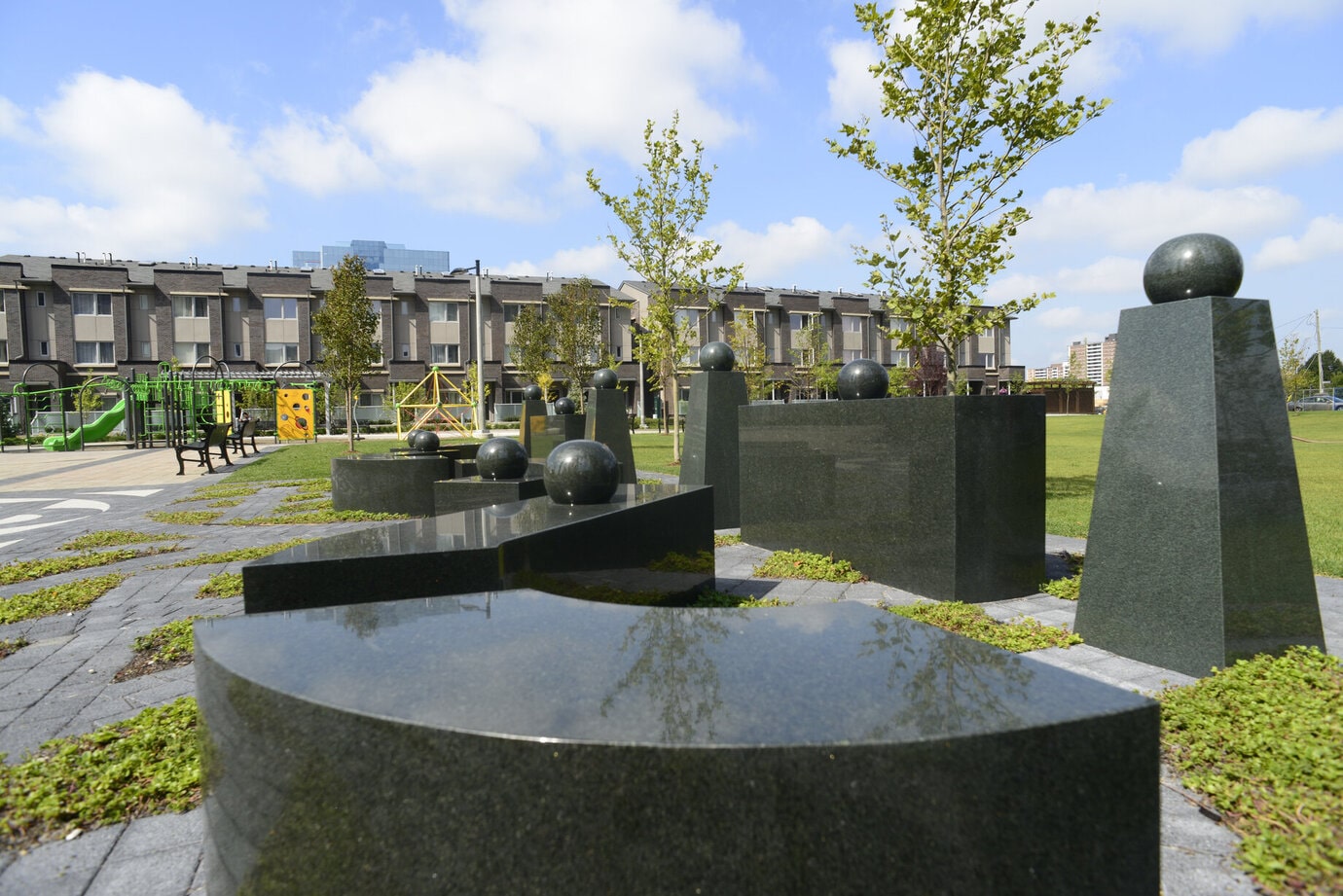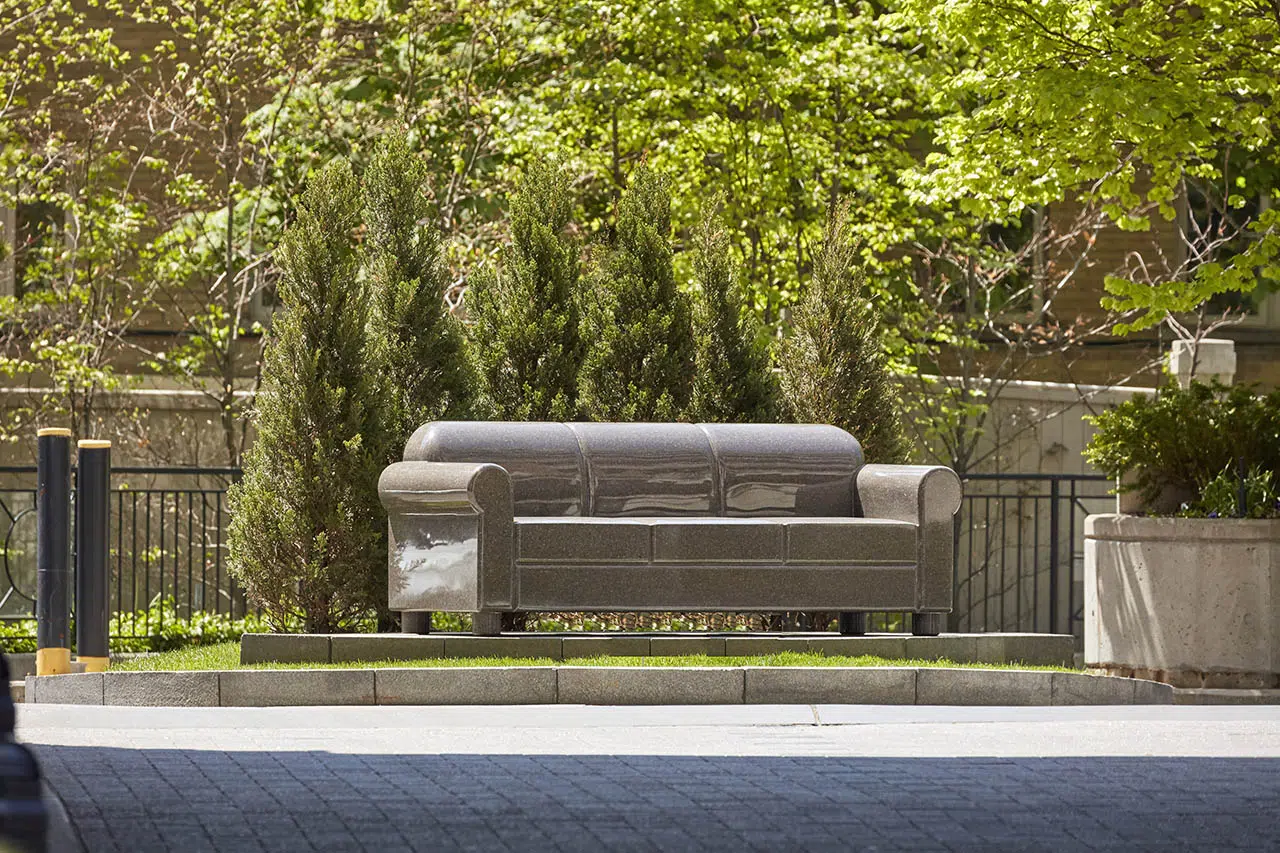When it comes to creating a landmark or sculpture, the choice of material is as important as the design and theme of the piece; integral, not just to how good it looks, but to its general quality and lifespan.
Among the many material options open to sculptors, artists, architects and memorial makers, granite stands tall. We may be slightly biassed – who, us? – but granite has so much going for it and offers loads of brilliant benefits that make it the go-to choice for many.
In this blog post, we’re going to take a look at the variety of material options open to artists, architects and memorial makers – and then we’ll delve into the five most compelling reasons to choose granite over the competition.
Right, let’s get started. Aside from our beloved granite…
Which materials are commonly used for architecture, landmark and memorial projects?
1. Marble: Known for its elegance and classical appeal, you’ll see it used in sculptures, columns, and facades. One very famous example? The Parthenon in Athens.
2. Limestone: Valued for its versatility, it can be found in both modern and classical architecture – from the Pyramids of Giza to many European cathedrals (including St. Publius Parish Church in Malta, pictured below).
3. Sandstone: This sedimentary rock has a very distinct texture and has been used in various landmarks, including Petra in Jordan and some parts of the Red Fort in Delhi, India.
4. Bronze and Corten Steel: as used in our Voices of Freedom project. Both of these materials are used often, but rarely by themselves
Famous structures made from brick and concrete
Of course, designers can also choose to work with sturdy brick – take the iconic crenellated red ones that were used to construct the Kremlin, Red Square, in Moscow.
This historic fortress complex features 20 towers – 19 with spires – and was built at the end of the 15th century by Italian architects and builders. Fair to say, it looks as impressive today as it did back in the 1400s.
Tough concrete is another option – take the Hoover Dam and the Burj Khalifa – along with steel, wood, glass, and copper (hello, Statue of Liberty).
But here are five reasons why granite beats the competition for many applications.
Top 5 reasons granite is chosen by public architecture and monument designers
1. Durability
Granite is synonymous with durability. Extremely resistant to wear and tear, it’s less likely to get scratched, stained or weathered compared to materials such as marble, limestone, and sandstone.
This makes it a preferred choice for outdoor monuments and structures
2. Easy to look after
Granite is relatively low-maintenance, requiring minimal care to preserve its impressive appearance. It doesn’t require sealing as frequently as marble, for example.
Easy maintenance is a big tick for those creating buildings/landmarks in high-traffic or public spaces
3. Very versatile
Granite can be used for a wide range of applications, while its natural patterns and colours make it suitable for various design styles.
In contrast, materials such as concrete can lack the character and beauty of natural stone.
4. Heat resistant
Granite’s thermal resistance sets it apart from a material such as marble, which can be more sensitive to heat.
Very hot sun can cause the surface of marble to erode, resulting in a loss of fine details, smoothing of sharp edges, and a generally weathered appearance. This can then lead to cracks or the spalling – flaking – of the surface layer. Marble is also porous, meaning it’s more likely to stain in hot temperatures, too.
Liquids, such as water or acidic substances from rain or nearby plants, can also penetrate the stone, resulting in discoloration.
5. Life expectancy
Granite has a long life expectancy and maintains its appearance over time.
Its inherent sturdy nature also means any structures or monuments made from it can enjoy a long and healthy life too.
We’re sure you agree this is a hugely important factor in choosing materials for landmarks or architectural projects where durability and longevity are paramount.
In a nutshell…
Granite rocks for landmark and architectural projects. It’s tough, easy to handle, looks great, and beats the heat.
With its low-maintenance nature and a style that suits anything, we believe it outshines marble, sandstone, concrete and co’.
Plus, it’s a longevity superhero – the perfect match for structures that want to stand the test of time and still look great doing it! Check out our 5 Most Famous Monuments Made from Granite blog for even more proof!
Do you have any new projects in the pipeline?
We’d love to hear from you and discuss your vision. At HGH, we pride ourselves on sourcing the finest granite and providing the best service to our valued clients.
Whether you’re working on a welcome sign, a timeless headstone, or a public architecture piece, our team – and their many years of expertise – is at your service!
Get in touch with us today.



